Through out the years several
smaller communities have sprouted up and survived throughout the county,
Swedeborg, Hancock, Laquey, Big Piney, Devils Elbow, St. Robert, and Buckhorn.
Even though they have retained their small country size, they are still
very important to the overall balance of Pulaski County.
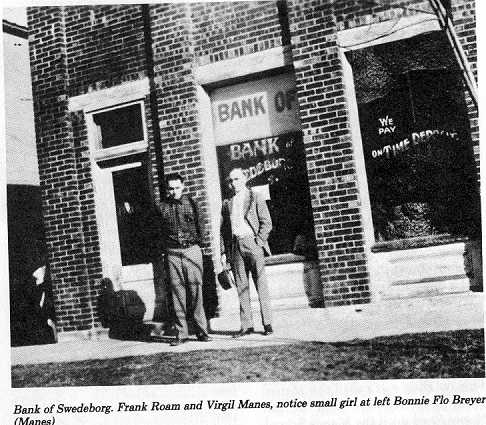
Swedeborg, MO
Swedeborg was born in 1868. It
is located at the junction of Highway 133 and Highway T, half way between
Crocker and Richland. The majority of people have never heard of Swedeborg,
and very seldom does it make the news. While the railroad was being built,
the local men were cutting wood for the engines and stockpiling it along
the way. Soon there was great piles of wood stacked along the tracks in
the area where Swedeborg is now. Log Cabins began to be built for the workers,
and soon a small community was born. Because of all the wood stacked around,
the first name it was given was "Woodend". Soon a company was formed by
some of the Swedish men that was working there for the railroad, because
they decided they wanted the community to be theirs and not belong to the
railroad. The land was laid out in town lots with a fraction of land left
on each side of town. These fractions were sold to Nick Schneider, Jim
Long, Mr. Burguess, and to Mr. Manes. They then laid these lots out into
one acres lots and sold them. In the early years, there were only a few
Swedish families in Woodend, but soon they came in numbers. Names such
as Benson, Nelson, Jurenburg, Sundquist, Jacobson, Anderson, Strom, and
Eckman. Some came directly from Sweden to start anew. By 1883, there were
more Swedes in the town that any other nationality and late in that year
the little village of Woodend, became known as Swedeborg.

In 1883 a post office was built,
and in 1884 a railway depot was built. In 1886 a number of the smaller
businesses were destroyed by a fire, but they were soon rebuilt along with
a couple new businesses. A school was built in 1890, on the Curtis farm,
then in 1891 an acre of land was purchased from the railroad and a one
room schoolhouse was built closer to town. There were no churches until
1893. Then the Swedish Baptist Church and the Christian Church was built.
In 1894 a corncracker and a grist mill was built, and the Traw drugstore
was opened. In 1913 the bank of Swedeborg was founded.
A number of businesses have come
and gone through the years and they have became a page in Pulaski County
history. Life goes on today pretty much as it did back in the 1800's, quiet
and peaceful. The trains don't stop there anymore, they just pass through.
Many descendants of the original Swedish families still live in and around
the small village. As time creeps on, I suspect that Swedeborg will continue
to savor their wonderful small community way of life, enjoying what it
has to offer, and will continue to withstand "Moments in Time."

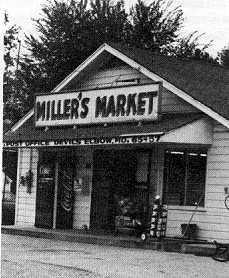
Devils Elbow, MO
Devils Elbow, MO is a small community
located to the east of Waynesville, on Old Historic Route 66. It is situated
on the banks of the Big Piney River and just south of the community of
Hooker.
Hooker was named for a landowner
by the name of Hooker, who owned a large amount of land on both sides of
the river. Hunting and fishing was a big asset to the people of Hooker
and Devils Elbow. In the summer the men served as quides on the river and
in the winter they took the tourists hunting. The old Wire Road ran through
Hooker from east to west. Devils Elbow, is about all that left of the Hooker,
Devil's Elbow communities. The communities flourished as long as Route
66 went through them, but when Interstate 44 came through and all the traffic
ceased, the communities almost died. The Hooker Store run for many years
by the West family shut down. Now all that stands is a small country market,
and the post office plus a few houses located across the street in the
community of Devil's Elbow.

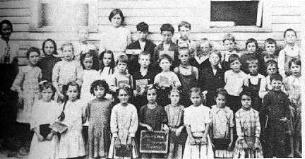
Hancock, MO
Hancock, MO is located about
halfway between Crocker, Mo and Dixon, MO on Highway 133. It was platted
out by William A Murphy in 1869 and was actually called Iron Summitt. About
1877 the name changed to Hancock after an official of the Frisco Railroad.
The early businesses of the town were, grocery stores, drygoods, hardware
and shoes. There was a saloon, a blacksmith, a hotel, a mill and a grain
elevator. The Christian Church was organized by my great great great grandfather
James Nathaniel Routh and the Roberts family. The Baptist Church was organized
by the Goodman and Porter families. Early families living in Hancock were
the Alexander's, Claiborns, Decker's, Goodmans, Hamiltons, Hancocks, Porters,
Lipscombs, Murphy's, Rouths, Sewells, Singletons, Wheelers, and Woods.
Today Hancock is a bedside community as with the other small towns, where
country living is still much a part of their everyday life. Many of the
pioneer families descendants still live in and around Hancock. Some of
the present day families are the Crews, Gillmores, Mitchell's, Davis, and
Copeland families.

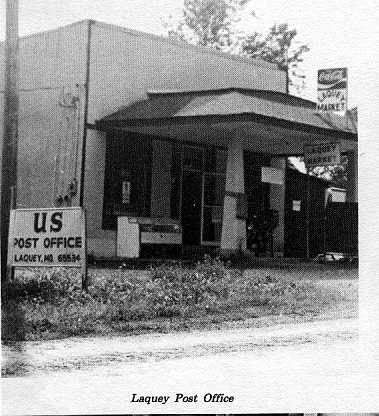 Laquey, MO
Laquey, MO
After the Civil War, Cyrus Parson,
a preacher of the gospel from Maryland, came to Pulaski County, to be with
a brother that had moved here many years earlier. He established the Ideuma
Baptist Church which is located southwest of Waynesville about 4 miles.
As the community continued to grow around the church, so did the area businesses.
In 1890 Columbus Parsons opened a store. In 1898 Columbus parsons and Joseph
J. Laquey petitioned the United States Post Office to have the post office
moved from Colley Hollow to the store. Since is was mainly due to the political
influence of Joseph Laquey that the post office be moved, it was decided
the the post office and community be called "Laquey." Laquey is still a
small community located just a few miles south west of Waynesville. The
post office is no longer in the store. In 1983 it was moved to a new facility
next to the Country Boy's Feed Store in a small shopping center south of
the original location. Country life hasn't changed much in Laquey. There
are no stop lights and no main streets. Just the plain country life much
as it was many years ago.

Helm
Helm was a settlement on the
railway between Dixon and Hancock. In 1887 a pumping station was built
and a large pond was dug by the railroad. This was the beginning of Helm.
John Mayfield was the one in charge of the pump station. W.H. Murphy was
the first settler to build a general store. John Reinchart built the first
grist mill and opened a blacksmith shop. Fred Wilken had a sawmill, threshing
machine and grist mill. Helm was a shipping point for the P.K. Apple Orchard.
The orchard got its name from a large cave and a family that lived in the
area. Helm ws named for Washington Helm, who owned the land in the area
and was a soldier in the Civil War. Helm no longer exists, however the
area remains a residencial area.

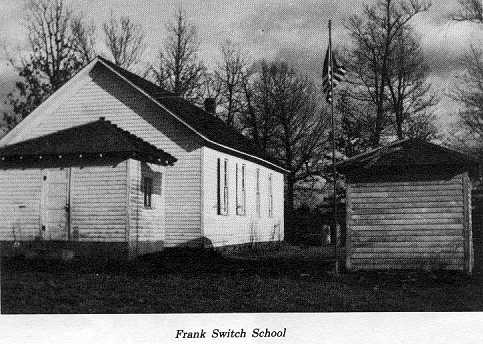
Franks Switch
Today a electric substation stands
where once there were only woods and meadows. Settlers came after the Civil
War, a railroad was built thru a section south and east of Dixon, A switch
and siding was put in for extra engines. They were needed to boost the
trains over the Dixon Hill, the most difficult grade along the line. Eventually
a depot grew up along the right of way. Behind the depot and across the
road was a big country store. Numerous homes grew up around the community.
Below and across the tracks was the Section House where the foreman of
the work crew who kept care of the switch lived. Just across the road was
the school, where generations of children sat at iron framed wooden desks.
They were taught the three "R's". Now as time has turned into deacades
and a new century is on the horizon, Franks Switch is as some of the other
communities are, just a wide spot in the road, where our "Pioneer Families
grew up through, Moments in Time.

Big Piney, MO
Big Piney, MO is a small community
located in the south eastern part of the county close to the banks of the
Big Piney river. It is cut off completely by Fort Leonard Wood. Many years
ago, a tornado all but destroyed the small community. Now, there are a
few businesses where many more used to be. The pioneer families that still
make up the community, are the Pages, Welchs, Chambers and Dyes. Big Piney
pretty much remains as it was many years ago. You can still hear the coyotes
howl at night, and you can sit outside and see the stars with out having
the glaring of street lights to bother you. Big Piney, MO, a country community
that will remain country.

St. Robert, MO
St. Robert, MO is a town located
between Waynesville and Ft. Leonard Wood. It has a population of approximately
2,500 people. It is the business hub of Pulaski County. Ninety five percent
of the businesses associated with the Waynesville, St. Robert, Ft. Leonard
Wood area are located in St. Robert.
St. Robert is a young town. It
started the day after the startling news that the United States Government
was going to build a Army post on the Mark Twain National Forest. For a
hundred years, the ridge that St. Robert grew from was known as "Gospel
Ridge". It was inhabited by a half dozen farms, a church and a cemetery.
When the news came the fort was to be built, and thousands of workers would
be moving into the area, night clubs, liquor stores, restaurants, cabins,
and temporary barracks sprang up. That was in 1940. Now St. Robert is growing
in leaps and bounds. With the news that the United States Army is closing
two forts in other states and bringing those forts to Pulaski County, things
have began to boom again. New homes, businesses, motels, restaurants, and
hospitals are all hurrying to be built in time for the other forts arrival
in 1999. St. Robert will continue to grow and prosper. If any town in Pulaski
County will change and loose it country life style, it will be St. Robert.

Pulaski County holds many traditions,
customs, and memories. My only regret in working with this project is that
I waited so long in starting. Many of the old pioneers are gone now and
with them the stories that we would love to hear. It is my hope that the
information contained in these pages has been helpful, enjoyable, interesting,
and above all long lasting. I thank you for your support, and I hope that
through this project, you have learned many interesting things about our
"Pioneer Families of Pulaski County, MO" and thank you for joining me as
we look through, "Moments in Time."